Health & Medicine
Nearly 30-35 percent individuals in India between 35 to 50 years could have had “silent heart attacks”: Dr Pranav Kabra
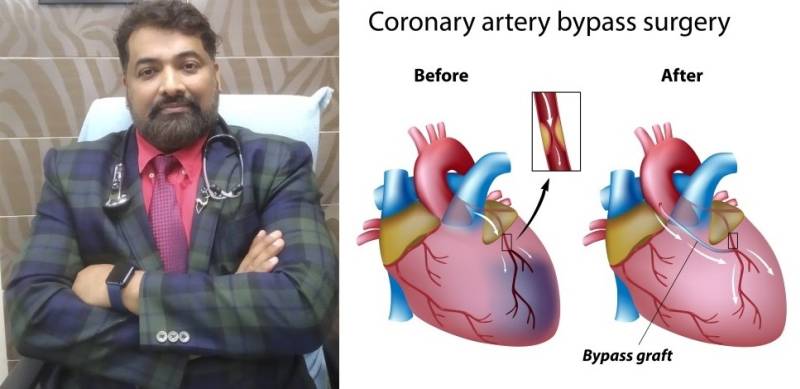
MUMBAI: According to diabetes and cardiac specialist Dr Pranav Kabra of the Raksha Multispeciality Hospital in suburban Mumbai at Malad, approximately 30 to 35 percent individuals between 35 to 50 years of age in India could have suffered silent heart attacks, without their knowledge or any symptoms showing up, yet lethal in the long run as the heart disease further worsens.
Most patients who suffer from silent heart attacks could be oblivious to the same, assuming they have a strained shoulder or hurt chest muscle or any other ailment except for an actual heart attack.
A silent heart attack may not cause chest pain or shortness of breath or sweating, or symptoms, which are typically associated with a heart attack by most people.
Those who suffer a silent heart attack may presume they have a heartburn, a flu or a strained chest or shoulder muscle. However, a silent heart attack, like any heart attack, involves blockage of blood flow to the heart and possible damage to the heart muscle and structure and is almost as dangerous as a normal heart attack, if not more dangerous as the patient is unaware of what’s lurking inside the body.
A silent heart attack is a heart attack that has very few, or no symptoms or has symptoms not recognized as those of a heart attack.
About one in four heart attacks are “silent” or maybe even one in three, because many, if not 90 percent of silent heart attacks go unrecognized and unreported and the patient is oblivious to the fact that he is suffering or has suffered a heart attack.
While in some cases, silent heart attacks can be identified after an electrocardiogram (ECG test) but some really silent heart attacks are not detected by ECG tests, particularly if the test is done hours or days later.
Patients who suffered a silent heart attack are at a much greater risk of death from a normal heart attack later on, than those who have a heart attack with recognized symptoms and took treatment and corrective action in time, opines Dr Kabra.
Patients who had a silent heart attack have a three-fold or greater likelihood of dying from heart disease or future heart attacks, as the initial trouble was unnoticed and untreated, says Dr Kabra.
Health & Medicine
More and more teenagers, youth in Goa, experiencing Heart Attacks and CVD: GCHHR

PANAJI: The Global Centre for Human Health & Research (Pharma & Healthcare) or GCHHR in a press note issued on Saturday said that more and more youth and teenagers are experiencing heart attacks, cardiac disease and other related cardiac ailments in Goa due to stress and changes in lifestyle, sleeping patterns and food habits.
According to the Mumbai-based GCHHR, which conducted a survey in eight Goan colleges, even though heart attacks are typically associated with mid-aged or older adults, they can occur at any age and more and more teenagers are experiencing heart problems in several Indian states including Goa, with stress, diabetes and obesity
playing an important role in the increased incidence of cardiovascular disease (CVD). Increasing consumption of alcohol, drugs, unsupervised health supplements and other food items is also one of the factors for the increasing incidence of CVD.
A similar observation was made recently by Prof Sushant Joshi, environmentalist and wellness expert with the Centre for Promoting Indian Economy (CPIE India).
In the United States, many people have health conditions (like obesity and high blood pressure) that raise the risk
of a heart attack even in their early 20s and 30s and similar traits are now being observed in various states including Goa, which has a high incidence of heart disease among the youth.
According to cardiologist and diabetologist, Dr Pranav Kabra, approximately 30 to 35 percent individuals between 35 to 50 years of age in India could have suffered silent heart attacks, without their knowledge or any symptoms showing up, yet lethal in the long run as the heart disease further worsens within the body. The numbers keep increasing year-on-year.
Silent heart attacks are more dangerous than normal heart attacks because patients – some of them very young and not expecting any heart trouble – are not aware that they have a heart problem and do not take immediate medical treatment, completely oblivious to the medical issues in their body.
According to Dr Kabra, some patients could never know they have just suffered a silent heart attack, thus deferring or never taking appropriate treatment and care, causing blockages and impediments to grow and flourish inside the
body.
The number of 30 to 40-year-olds undergoing angioplasties has shot up drastically and water and air pollution is also to blame, claims Joshi.
The average age of heart attack patients in most hospitals today is in the range of 35 to 55 years, the GCHHR said in an observation, adding that the number of 25-year-olds with CVD has gone up by 25 percent in the last decade.
Health & Medicine
When should you do a Liver Function Test (LFT)? Dr Pranav Kabra shares the A to Z of LFT
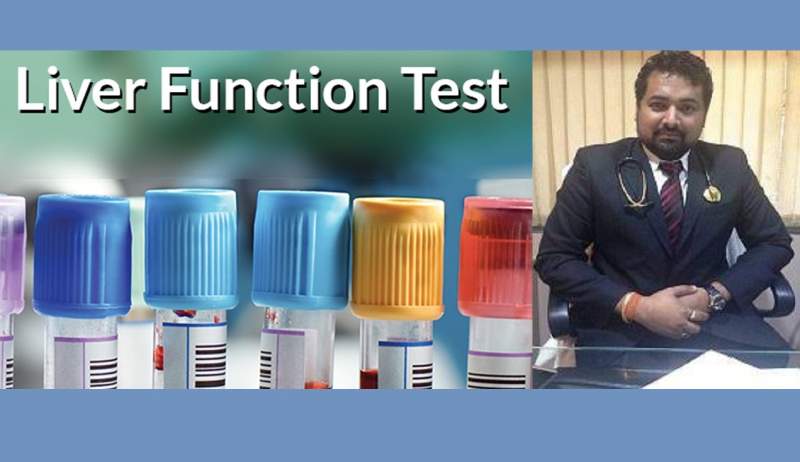
MUMBAI: A Liver Function Test or LFT in medical parlance is used to screen for liver infections, such as hepatitis or monitor the progression of a disease, such as viral or alcoholic hepatitis, and determine how well a treatment is working. It also measures the severity of a disease, particularly scarring of the liver also known as liver cirrhosis. In this exclusive interview, Dr Pranav Kabra (MD, Physician) with the Raksha Multispeciality Hospital at Malad West in suburban Mumbai, answers pertinent questions concerning liver function tests.
What is a Liver Function Test?
A liver function test is one of a group of tests that check levels of certain enzymes and other proteins in your blood.
Some of the tests look for enzymes that you’d find in your blood only when your liver is damaged or has a disease. Others check that the organ is working the way it should.
Your liver does all kinds of work that’s crucial for your health. It helps break down food, clean your blood, make proteins, and store energy. If something goes wrong with it, you might have a number of symptoms, from yellow skin to slurred speech. That’s when you might need a liver test.
An LFT is a diagnostic tool used to detect whether a person’s liver is damaged, and can also be a screening tool for measuring the severity and type of liver disease.
Liver function is measured with a series of blood tests, called a panel. In a standard liver panel, liver enzyme tests measure levels of alanine transaminase (ALT), aspartate transaminase (AST), alkaline phosphatase (ALP), and gamma-glutamyl transpeptidase (GGT). Increased levels of ALT and AST can be a sign of liver damage, while increased levels of ALP and GGT can be a sign of bile duct or liver damage.
Liver protein tests measure total protein, which consists of measuring levels of globulin, prothrombin and albumin; low levels of these proteins in a person’s blood can indicate liver damage. Globulin aids the immune system with fighting infections, prothrombin aids in blood clotting, and albumin levels show whether the liver is producing a normal level of proteins.
A liver panel will also measure bilirubin levels in a person’s body to determine the severity of liver damage. During advanced stages of liver damage, bilirubin can leak out of the liver and cause jaundice, turning the urine dark and eyes yellow.
Before an LFT, your doctor will advise you not to consume certain foods or drinks that could potentially affect the results. These include over-the-counter medicines and herbal supplements. The results of an LFT can vary depending on factors such as age and gender.
Should a liver function test be done on empty stomach? Does one need to fast before doing a LFT?
Measurements of kidney, liver, and thyroid functions, as well as blood counts, are not influenced by fasting and can be done even after meals. However, fasting is required before commonly ordered tests for glucose (blood sugar) and triglycerides (part of the cholesterol, or lipid, panel) for more accurate results.
What are the signs of liver disease or damage? When should I do a LFT?
The signs of liver disease or liver damage are as follows. Any of the following symptoms (besides others) necessitate immediate medical attention and one must test for liver failure.
- Jaundice or yellowing of the eyes or skin
- Pain and distention of the abdomen due to the release of fluid from the liver
- Swelling of the lower legs due to fluid retention
- Confusion or forgetfulness. When the liver isn’t functioning properly, toxins build up in the blood and can travel to the brain, affecting brain function.
- Dark-colored urine
- Pale-colored stool
- Chronic fatigue
- Nausea or vomiting
At what age do liver problems start?
“The scary thing is that some patients are only in their 30s and 40s. The chances of developing liver disease go up the longer a person has been consuming alcohol and is most common between the ages of 40 and 50. Other doctors have diagnosed people with liver disease even when they are in their 20s. As per the latest medical updates, even a 20-year-old could be suffering from some form of liver disease or damage and needs to get tested if any of the above signs or symptoms are visible or existent.
Health & Medicine
Chemically ripened mangoes and other fruits can even kill you: Dr Pranav Kabra
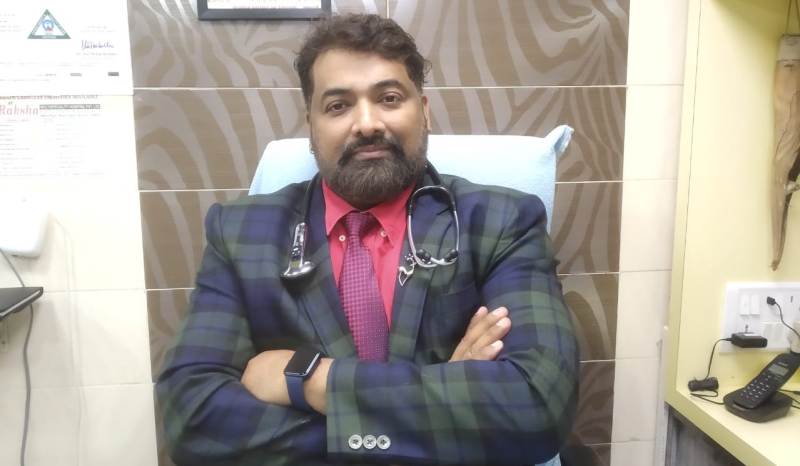
MUMBAI: It’s that time of the year when mangoes flood the markets and we all love eating the golden-yellow delicious fruit. Unfortunately, in today’s fast-paced world, most fruits sold in retail markets are artificially or chemically ripened and the King of Fruits is no expection.
According to Dr Pranav Kabra of the Raksha Multispeciality Hospital located at Malad in the western suburbs of Mumbai, artificially or chemically ripened mangoes (and other fruits) are very harmful to the human body, as various illegal and dangerous chemicals are used to ripen mangoes and also increase their shelf life.
This is what Dr Pranav Kabra has to say about artificially ripened fruit/mangoes and why one must be careful while buying them or rather avoid artificially ripened fruit alltogether.
Artificial ripening is not only illegal, but dangerous and can sometimes be lethal.
According to Dr Kabra, the FSSAI has prohibited and banned chemical ripening of mangoes. It has also warned that the use of calcium carbide for ripening mangoes can lead to the formation of dangerous chemical compounds such as arsenic and phosphorus. These chemicals can accumulate in the body and cause long-term health problems including poisoning, eventually leading to death.
How do you know if mangoes are artificially ripened?
An artificially ripened mango will have a mixture of light and dark yellow colour on it. This indicates that the mango is not completely ripened. The artificially ripened mangoes will seem ripened or yellow on the outside but not on the inside. They might look attractive to the eye but will be very hazardous for your health, he says.
Which banned chemical is used for artificial ripening of mangoes?
The most commonly used chemical for artificial ripening is Calcium Carbide (CaC2) and is popularly known as ‘Masala”, though it is banned under the Food Safety and Standards (Prohibition and Restrictions on Sales) Regulations of 2011. Once dissolved in water, carbide produces acetylene gas. Acetylene gas may affect the human neurological system by inducing prolonged Hypoxia. Other negative effects include headache, dizziness, mood disturbances, sleepiness, mental confusion, memory loss, cerebral edema, seizures and even death.
Can we remove this carbide from mangoes?
Dipping mangoes in 2% sodium carbonate solution for 12 hours can remove arsenic residues from the calcium carbide ripened mangoes prior to their consumption. But this can ruin the natural taste and texture of the fruit and most people will not relish it or want to consume it.
Calcium Carbide can irritate the skin causing a rash, redness and a burning feeling on contact. It can cause other skin problems on sensitive skin.
Permanent damage (corneal opacities). Exposure may cause a build-up of fluid in the lungs (pulmonary edema), a medical emergency that requires hospitalisation. It also causes symptoms like headache, dizziness, high sleepiness, memory loss, cerebral oedema, numbness in the legs and hands, general weakness, cold and damp skin, low blood pressure and seizure. Pregnant women particularly need to be very careful and should not consume such contaminated fruits and vegetables. Calcium is a carcinogenic substance that is very dangerous for humans and may cause cancer, opines Dr Kabra, adding that one should refrain from eating mangoes ripened with carbide. These mangoes, as per doctors, have been strictly banned by doctors and the medical fraternity due to harmful medical effects on the human body.
How do I know if my mango is carbide free?
Put the mangoes in a bucket of water. If the mangoes sink, they are naturally ripened. If they float, they are harvested and ripened artificially says Dr Pranav Kabra.
Health & Medicine
Dr Pranav Kabra: Not worried about fake news, our services at Raksha Hospital speak for themselves
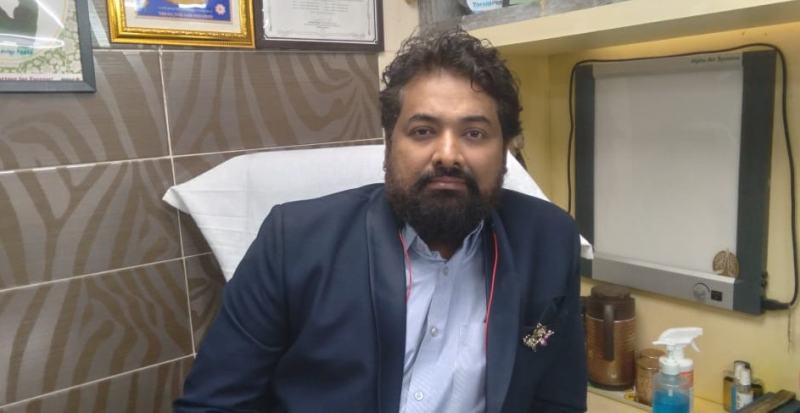
MALAD, MUMBAI: Speaking to media persons at the Raksha Multispeciality Hospital at Charkop Naka in suburban Mumbai on Friday evening, Dr Pranav Kabra said he was not bothered or disturbed with the fake news and posts circulated on social media by some disgruntled individuals in the vicinity.
For the last two weeks, several one-sided, totally “fake news” articles written by non-existent bylines (reporters) and published on dubious or unknown websites, with no legal sanctity or authorization of any sort have been doing the rounds on social media and various WhatsApp groups in Malad, Borivali and even Vasai and Virar. The articles have been critical about the running of the hospital and have run fake news about the staff and damaged their reputation without any basis.
“This is an attempt to malign the hospital, which has been serving the people of Malad, Charkop, Malwani, Bhomi Park, Kandivali and other surrounding areas. Raksha Hospital is one of the first in the area to start operations and serve the people since the last 15-odd years. We have been doing selfless service and almost half of our patients are treated for free. In spite of this, the competition around us is growing and in the last 2-3 years, post the lockdown, some new hospitals and clinics have cropped up or are in the process of opening up. They are running malicious campaigns to disturb the residents and our patients. We have filed a written police complaint against some known and unknown persons for extortion, defamation, creating mischief and other sections of the Indian Penal Code and the IT Act,” said a spokesperson for the Raksha Hospital.
Dr Kabra who runs the hospital and is known for his charity and generosity among the poor patients of Malwani, Ganesh Nagar and Charkop says he is not at all bothered by the ‘fake news’
“In a game of cricket, there is one batsman, but 11 other players from the opposite team try to get him out. For me business is a like a game of cricket. There will be several other players trying to get me out. My patients come to me because of my personal rapport and contact with them. During the Covid pandemic, we treated thousands of patients free of cost or at greatly reduced fees. These are the people who come to me for treatment, along with their families. They have known me for the last 15 years and more. I am not worried about those running and circulating fake news,” Dr Kabra told this reporter.
Meanwhile, the Malwani police have begun investigating into the complaint submitted by the hospital against the fake news circulated on social media platforms. We are conducting a PE (preliminary enquiry) and after sanction from our seniors an FIR will be registered in the matter, said an official from Malwani police station.
Health & Medicine
Skin and respiratory ailments in Malad-Kandivali belt show marked increase due to air pollution

MUMBAI: According to a study conducted by the Raksha Hospital Research Centre, a division of Raksha Multispeciality Hospital, Charkop Naka, Malad West, the incidence of skin and respiratory ailments in the Malad-Kandivali belt have increased several times over in the last 6-10 months due to increased air pollution caused by traffic congestion, BMC digging work, construction and infra work, etc.
The same views are endorsed by Smt. Gulshan P K of the Malad-Kandivali Residents Forum (MKRF) who felt that kids are the most affected and the ailments are affecting their school performance.
Dr Pranav Kabra, practicing Physician and cardiac expert at the Raksha Multispeciality Hospital says the cases of hospitalisation due to respiratory ailments has gone up significantly. TB, Pneumonia and other numbers are on the rise, Dr Kabra opined.
The Malad-Kandivali Residents Forum (MKRF) has strongly condemned the haphazard and apparently unplanned digging works by the Mumbai Metro, BMC and other utility companies in the locality.
“The air pollution in the area has almost doubled and during peak traffic hours, the air pollution is at an all time high. Due to this factor, skin diseases and respiratory diseases in residents of the area have increased several times over. The Mith chowky area is dug up for the last 8 to 10 months. Internal roads in Malad are also being dug up by utility service provides. The roads are not properly reinstated after being dug up. Residents have to face the brunt of this unplanned, haphazard activity,” said Dr Pranav Kabra of the MKRF.
Main highlights of a study conducted by Raksha Hospital Research centre, a division of Raksha Multi-speciality hospital
1. Incidence of skin ailments both in men and women as well as children in the Malad-Kandivali belt has shot up significantly in the last 8 to 10 months. Along with skin ailments, other respiratory diseases have shown a marked increase in prevalence.
2. The reason for this (point 1 above) is the increased air pollution in this locality caused by BMC and utility company digging work, construction activities and traffic congestion.
3. Cases of TB, Pneumonia, Asthma, Bronchitis and other lower respiratory tract ailments are increasing.
4. Air pollution, garbage, traffic congestion are also leading to massive increase in disease-causing mosquito population. Infrequent fumigation and fogging could be the main reason for the increased mosquito menace in this locality.
Health & Medicine
Covid can cause increased chest pain, heart ailments, even months after infection
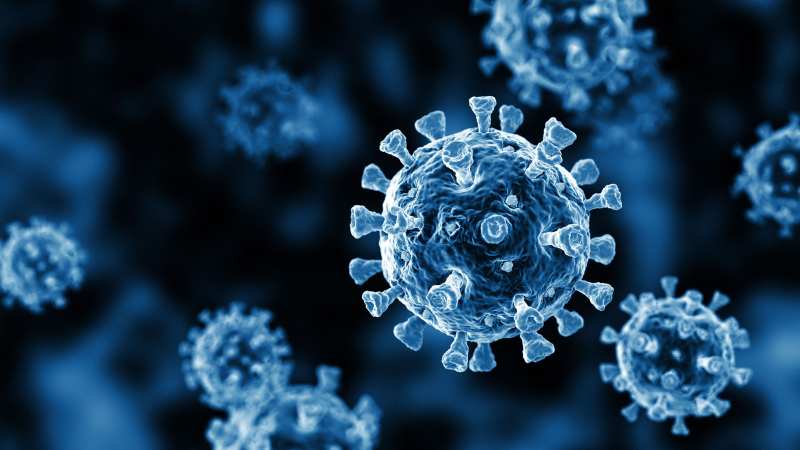
WASHINGTON DC, (PTI): COVID-19 patients may be at increased risk of suffering chest pain in the six months to a year after an infection, which could be a sign of future heart and cardiovascular complications, according to a recent study.
Nearly 19 per cent of US adults who had previously tested positive for COVID-19 report having “Long COVID,” where they experience signs and symptoms for four weeks or more after the initial phase of infection.
Researchers from Intermountain Health in the US studied nearly 150,000 patients for cardiovascular symptoms. They found that patients who tested positive for COVID-19 had higher rates of chest pain in the six months to a year after the infection and many of them experienced heart issues.
”Many COVID-19 patients experience symptoms well beyond the acute phase of infection,” said Heidi T. May, cardiovascular epidemiologist at Intermountain Health and principal investigator of the study.
”While we didn’t see any significant rates of major events like heart attack or stroke in patients who had an initial mild initial infection, we did find chest pains to be a persistent problem, which could be a sign of future cardiovascular complications,” May said.
The study finding was presented at the American College of Cardiology’s 2023 Scientific Conference in New Orleans, US, on Sunday.
In the large retrospective study, researchers compared three groups of Intermountain Health patients.
The team found that at six months and one-year intervals, patients who tested positive for COVID-19 had significantly higher rates of experiencing chest pain, but saw no other major increases in cardiovascular events.
”As of right now, the symptoms aren’t necessary translating into hard outcomes, but that’s something that will need to be reassessed over time,” May said.
”It could be that lasting effects of infection on the cardiovascular system are hard to quantify in terms of diagnoses or other events in the short-term and won’t be realised until longer follow up,” the researcher added. (PTI)
Health & Medicine
Influenza A subtype causing cough, fever in India claims ICMRL: IMA advises against indiscriminate use of antibiotics

NEW DELHI, (PTI): A persistent cough, sometimes accompanied by fever, running through India for the past two-three months is due to Influenza A subtype H3N2, ICMR experts said.
The H3N2, which has been in wide circulation for the past two-three months, causes more hospitalisations than other subtypes, said Indian Council of Medical Research (ICMR) scientists who keep a close watch on ailments caused by respiratory viruses through the Virus Research and Diagnostic Laboratories network. They have also suggested a list of Dos and Don’ts for people to follow to protect themselves from contracting the virus.
The Indian Medical Association (IMA), on the other hand, has advised against indiscriminate use of antibiotics amid rising cases of cough, cold and nausea across the country. Seasonal fever will last five to seven days, it said.
The fever goes away at the end of three days but the cough can persist for up to three weeks, the IMA’s Standing Committee for Anti-Microbial Resistance said.
Viral cases have also surged due to air pollution, it said, adding that it mostly occurs in people aged below 15 and above 50 and causes upper respiratory infections along with fever.
The association also asked doctors to prescribe only symptomatic treatment and not antibiotics.
”Right now, people start taking antibiotics like Azithromycin and Amoxiclav etc, that too without caring for done and frequency and stop it once start feeling better. This needs to be stopped as it leads to antibiotic resistance. Whenever there will be a real use of antibiotics, they will not work due to the resistance,” the IMA said in a statement.
The most misused antibiotics are Amoxicillin, Norfloxacin, Oprofloxacin, Ofloxacin and Levofloxacin. These are being used for the treatment of diarrhoea and UTI, it said.
”We have already seen widespread use of Azithromycin and Ivermectin during Covid and this too has led to resistance. It is necessary to diagnose whether the infection is bacterial or not before prescribing antibiotics,” it said. (PTI)
Health & Medicine
No definitive conclusion on COVID-19 origin theory: White House
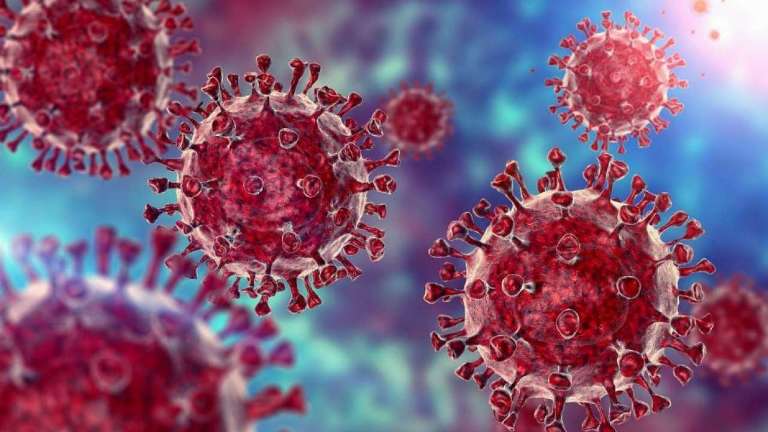
WASHINGTON DC, (PTI): There is no definitive conclusion on the origin of COVID-19 and the intelligence community and the rest of the US government are still looking at this, the White House has said following a report that the Energy Department has concluded the virus most likely leaked from a lab in China.
The pandemic’s origin has been the subject of vigorous debate among academics, intelligence experts and lawmakers.
The Wall Street Journal on Sunday, citing a classified intelligence report recently provided to the White House and key members of Congress, said the virus that drove the COVID-19 pandemic, killing close to 7 million people globally, most likely emerged from a laboratory leak in China.
Responding to questions about the report, National Security Council Coordinator for Strategic Communications John Kirby said: ”The intelligence community and the rest of the government are still looking at this. There’s not been a definitive conclusion, so it’s difficult for me to say, nor should I feel like I should have to defend press reporting about a possible preliminary indication here.
”What the President (Joe Biden) wants is facts. He wants the whole government designed to go get those facts, and that’s what we’re doing. And we’re just not there yet,” Kirby told reporters at a daily White House news conference on Monday.
The Huanan market in central China’s Wuhan city was the epicentre of the pandemic. From its origin there, the SARS-CoV-2 virus rapidly spread to other locations in Wuhan in late 2019 and then to the rest of the world.
According to the Wall Street Journal and the New York Times, the department’s conclusion was made with “low confidence,” meaning there was a level of certainty that was not high.
”And when we’re there yet and if we have something that is ready to be briefed to the American people and the Congress, then we’re going to do that,” he said.
Kirby said that President Biden made finding the origins of COVID a priority right when he came into office. And he’s got a whole-of-government effort designed to do that, he said.
”There is not a consensus right now in the US government about exactly how COVID started. There is just not an intelligence community consensus,” he said. ”The President believes it’s really important that we continue that work and that we find out, as best we can, how it started so that we can better prevent a future pandemic. The idea here is to get ahead of it so that should there be another one or should there even be the signs of another one, we can better get ahead of it,” he said. The emergence of the pandemic heightened tensions between the US and China, which US officials alleged was withholding information about the outbreak.
China, which has placed limits on investigations by the World Health Organisation, has disputed that the virus could have leaked from the Wuhan Institute of Virology, one of its labs in Wuhan, and has suggested it emerged outside China.
China on Monday rejected the report, saying the origins-tracing of the pandemic ”is about science and should not be politicised.” Foreign Ministry spokesperson Mao Ning said in Beijing that international experts have considered the theory that the pandemic might have leaked from a Chinese laboratory as ”extremely unlikely”.
She said it is a science-based, authoritative conclusion reached by the experts of the WHO-China joint mission after field trips to the lab in Wuhan and in-depth communication with researchers.
Responding to another question on China, Kirby said that one of the things that concerned the US about the spy balloon episode, aside from the fact that it was clearly designed to spy from a high altitude over potentially sensitive military sites, is that the lines of communication weren’t as open, particularly on the military side, as they need to be.
China and the US have been trading barbs since the Biden administration earlier this month shot down what it said was a spy balloon that had drifted over the continental US.
The balloon, which Beijing denies was a government spy vessel, spent a week flying over the United States and Canada before being shot down off the Atlantic Coast earlier this month on President Biden’s orders.
”So, the President maintains that his goal in the relationship is competition, not conflict. That has not changed, even in the wake of that spy balloon event.
”But one of the things that really … We need to move forward on opening up lines of communication, particularly on the military-to-military lane. And as you know, those were shut down by the Chinese after then-Speaker Pelosi went to Taiwan,” he said. (PTI)










































